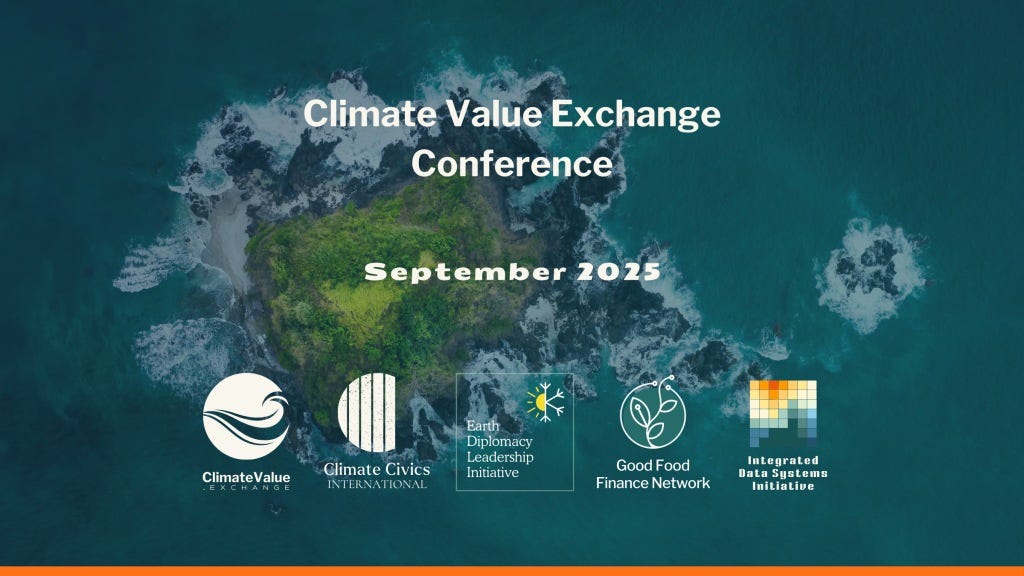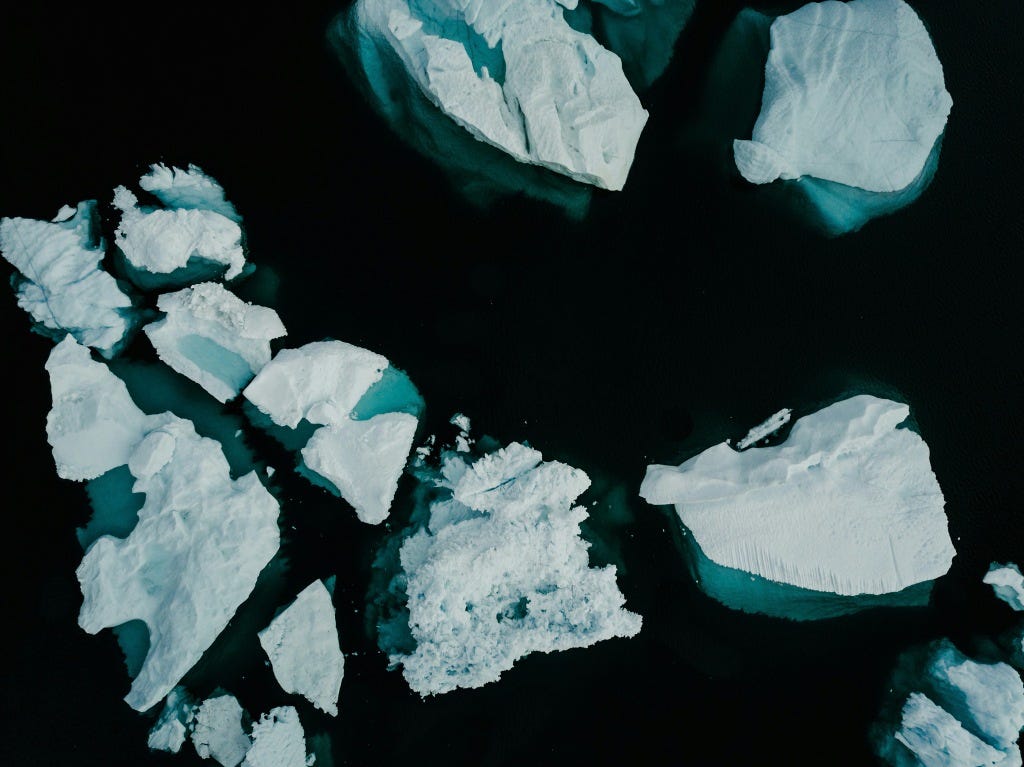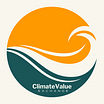Climate Value: The missing piece
In December, the Climate Value Exchange partners identified key areas of measurable Climate Value that are being under-reported and need urgent attention in 2025.
As governments, industries, and communities, grapple with the rising costs of climate impacts, and still-too-slow action to stop those costs from growing, it is increasingly clear that multidimensional Climate Value measurements are needed to drive everyday decision-making.
Climate Value Exchange briefing note, reporting from post-COP debrief and planning meeting
In December 2024, after the COP29 round of UN Climate Change negotiations, partners in the Climate Value Exchange gathered online to share views on the COP29, its outcomes, and their implications for our collective future. We also discussed opportunities for reform and ways in which the Climate Value Exchange can support negotiations that lead to mutual gains.
In the coming months and years, we will make decisions, collectively, that will determine whether we restore the possibility of successful climate-resilient development, or whether we leave unused all of the tools that would make it possible.
Core insights on COP29
The global climate-related negotiation process needs reform. There were high-level calls for urgent operational reform to the process issued during the COP29. Many civil society observer organizations and stakeholder groups also called for reform. There is concern that some areas of high-value climate action set forth in the Paris Agreement have still not been activated or explored in depth after years of discussion and debate.
We discussed the COP President's opening critique of rich countries that have vocal environmental movements and in some cases green-minded governments and policies, but which are also major consumers or exporters of fossil fuels. We also discussed the need for getting beyond language and blamecasting to rapid, pervasive innovation and implementation.

Inclusion is key. Not only do we need better public information, less distorted messaging, full acceptance of responsibility by all countries for the role they can play in the global climate-smart industrial transformation; we also need resources to flow directly to communities on the front lines of change—both those facing climate impacts and vulnerabilities and those needing support to take full advantage of the clean development opportunity.
CCI and the Climate Value Exchange will release a report on the Capital to Communities approach in early 2025, which will emphasize the related but distinct roles of ongoing stakeholder input and of micro-, small- and medium-sized enterprises (MSMEs) in building out the root system that will sustain the green economy.
On finance
There was a lot to say about the Baku outcome on finance, including the grave concerns now spreading about whether we have time left to get on track in time to stop and reverse dangerous climate change. One of the most important calls was from a presenter in the Earth Diplomacy Leadership workshops, who noted that without a shared definition of what finance is, and agreement about what it should be designed to achieve, it becomes very difficult to negotiate outcomes that provide meaningful progress.
Structural reforms were recommended, including major changes to the overall negotiating process. For this meeting, and to get to some shared clarity around definitions, needs, numbers, and implications, we focused on the report of the Independent High-Level Expert Group on Climate Finance. The report estimates that:
the global projected investment requirement for climate action is around $6.3–6.7 trillion per year by 2030, of which $2.7–2.8 trillion is in advanced economies, $1.3-$1.4 trillion in China, and $2.3–2.5 trillion in EMDCs other than China.1 These latter countries will account for almost 45% of the average incremental investment needs from now to 2030 but they have been falling behind, especially Sub-Saharan Africa. For 2035, we estimate global investment requirements for climate action to be around $7–8.1 trillion per year, with advanced economies needing $2.6–3.1 trillion, China $1.3–1.5 trillion, and EMDCs other than China requiring $3.1–3.5 trillion. These needs are our estimations of what is required for delivery on the Paris Agreement, and the investments will also make a vital contribution to sustainable growth and the achievement of the Sustainable Development Goals.
The report also:
…indicates that of the projected investment needs of around $2.4 trillion per year in 2030 for EMDCs other than China, around $1.6 trillion is for the clean energy transition, $0.25 trillion for adaptation and resilience, $0.25 trillion for loss and damage, $0.3 trillion for natural capital and sustainable agriculture, and $0.04 trillion for fostering a just transition. To emphasise, these are the investment levels that are necessary for delivery on the Paris targets. They are analytical deductions in relation to our estimates of what is needed, not a ‘first bid’ in a negotiation.
This last phrase has very critical meaning in the context of the Baku negotiations. The actual, operational, real-world need is not reduced by agreeing to a lower number. The report also highlights the importance of specific structural design of financial arrangements, and the importance of not creating new wasteful cost through punishing debt for addressing climate needs vulnerable countries have not created.
CCI interpretation of these numbers means that we will work, in 2025, on the premise that:
The Baku finance goals of $300 billion per year in direct assistance and $1.3 trillion per year from "all sources" must be a floor and not a ceiling.
They are the floor for need now, in the 2025-2030 range, not in the later years agreed in Baku, so reforms that will unlock far greater resources need to happen in the coming 1-3 years.
To support pervasive reform of financing structures and climate-smart trade, new metrics and cooperative mechanisms must begin to operate as soon as possible.
The right to quality information
The political process is affected by openness, accessibility, and quality of information flow—not just through and around the process and in reporting out, but across all of society, and in the shaping of public opinion. In recent years, we have seen how the coordinated corruption of public opinion—through denial of access to factual reporting and through self-reinforcing misrepresentations of reality made ubiquitous by algorithms that allow for pay to play nonstop disinformation—can allow hostile foreign regimes and criminal networks to interfere in elections, even in the most established advanced democracies.
Healthy societies need both freedom of speech and reliable empowered mechanisms and institutions, including the free press and open academic institutions, that can challenge disinformation and ensure people have real and reliable access to good and useful unbiased information.
We discussed the fact that addressing and preventing climate shocks, identifying, tracking, and building climate value, and securing a livable climate future, will all require sound information and evidence about our operating environment. In other words, we will experience more shocks, more harm and cost from those shocks, and a more unstable and more dangerous world, if we do not consistently put evidence to work for us.
Beyond the question of human rights—we have a right not to see corrupt interests overpower the innocent and the vulnerable or remove our basic human right to know and to choose—all nations face this informational challenge in operational ways that will shape future security and prosperity. We need solid evidence of geophysics, and of the interrelationship of economic data, industrial practices, and financial arrangements that set future conditions in motion, so we can make the most informed and effective choices to reduce risk, build resilience, and invest for the sustained creation of enhanced climate value.

In 2025, this question of the right to quality information will be a key element of work in all areas related to the ongoing polycrisis. The convergence of major crises—including climate, conflict, COVID ripple effects and related public health threats, the breakdown of nature and watersheds, and the rising threat of uncontrolled AI systems—means mistakes can cause far-reaching secondary and compounding costs.
Interconnectedness and the right to Best Practice Opportunity
We highlighted interconnectedness between areas of concern—climate, ocean, biodiversity, food, health, and security—during the December meeting. We also committed to add to the Climate Value Exchange website reports that reflect the emerging landscape of evidence and new options for action.
The first of these is the IPBES Nexus Assessment, which finds:
“current decision-making has prioritized short-term financial returns while ignoring costs to nature, and failed to hold actors to account for negative economic pressures on the natural world. It is estimated that the unaccounted-for costs of current approaches to economic activity – reflecting impacts on biodiversity, water, health and climate change, including from food production – are at least $10-25 trillion per year."
That cost is not theoretical. It is material, traceable, and is now emerging through critical interactions between people, industries, and the natural environment, in every region. While we still talk now of the breach of planetary boundaries putting stress on nature, ongoing unsustainable exploitation of the foundations of human health and wellbeing will eventually erode our ability to secure and distribute basic needs, including in the wealthiest nations. The COVID-19 pandemic emergency and its sudden-onset shortages in many areas, including food, was an early example of what this could look like.
An area we will want to explore further is the right to Best Practice Opportunity—the opportunity to benefit from the application of best practices based on the best available science and evidence, and leveraging new and emerging technologies, while remaining grounded in the goal of benefitting human health and wellbeing, through sustainable development.
Best Practice Opportunity in the context of the polycrisis could be a featured theme, if not the central theme, of the 2025 Reinventing Prosperity Report. The Report will be informed by the Climate Value Exchange Conference, projected for September 22-26, 2025.
The September 2025 CVE Conference will include sessions on:
Catalytic co-investment strategies to support healthy sustainable affordable food systems;
Multilateral cooperation to accelerate the emergence of climate-smart finance, banking, and trade;
Data systems integration to support multidimensional finance grading and tracking;
Pollution pricing approaches that build value in local economies and enable cost-effective energy transition.
Montana court ruling acknowledges right to stable climate
We also wish to acknowledge a landmark ruling by the Supreme Court of the State of Montana, which found in favor youth plaintiffs who argued the state constitution guarantees a right to a stable climate.
Here, the majority refused to turn a provision so central to the Montana Constitution into a nullity just because climate change happens to affect the whole world. We know that it’s affecting Montana in a heightened way. We know that the plaintiffs’ future is imperiled by the acceleration of climate change. And the court said that’s enough for them to come into state court and challenge a law that will exacerbate Montana’s greenhouse gas emissions.
This precedent may surprise many, but it shows what can happen when local public servants prioritize genuine accountability over abstract ideological interpretation of how the law treats the vulnerable and the powerful. Because the Montana Constitution recognizes the right of current and future generations to a clean, healthy environment, it must by extension provide protections against unchecked pollution and related harm.
EARTH DIPLOMACY LEADERSHIP IN 2025

FEATURED IMAGE






